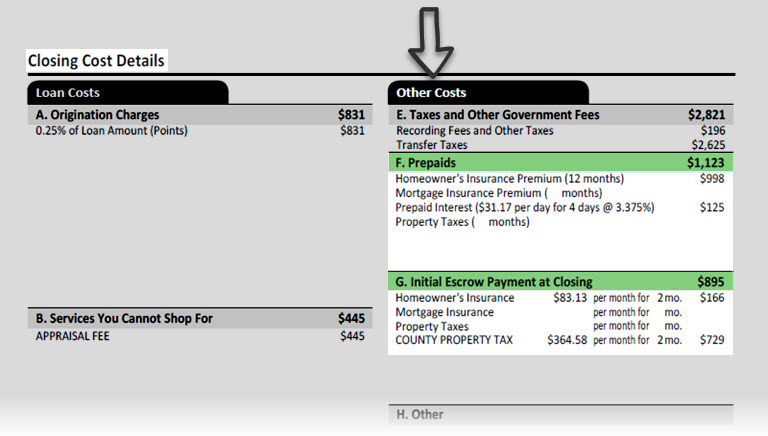A Biased View of Who Provides Most Mortgages In 42211
Peaslee & Nirenberg at 491-492. Lemke, Lins and Picard, Mortgage-Backed Securities, 4:20 (Thomson West, 2014 ed.). Peaslee & Nirenberg at 4. Peaslee & Nirenberg at 444-445. Peaslee & Nirenberg at 436. Peaslee & Nirenberg at 445. Lemke, Lins and Picard, Mortgage-Backed Securities, 4:21 (Thomson West, 2014 ed.). Did Financiers Actually Get Double-Duped with Re-REMIC Scores?, HousingWire May 19th, 2010 Silverstein, Gary J.
Tax Management Inc.: Securities Law Series (2007 ): A-54. Silverstein at A-54, A-55. Silverstein at A-55. Peaslee & Nirenberg, 44. Peaslee & Nirenberg at 1309. Peaslee & Nirenberg at 497-498. Peaslee & Nirenberg at 441. Peaslee & Nirenberg at 495. Lynn, Theodore S., Micah W. Bloomfield, & David W. Lowden. Realty Financial Investment Trusts.
29. Thomson West (2007 ): 6-22. Peaslee & Nirenberg, 501. Silverstein, A-48. Peaslee & Nirenberg, 13 Peaslee & Nirenberg at 504, 581 Peaslee & Nirenberg at 504 Peaslee & Nirenberg at 505-506. Peaslee & Nirenberg at 44,841.
For a number of reasons, mortgage-backed securities are safe financial investments. The possibility of in fact losing cash is considerably lower than it would be if you purchased the stock market, for instance. Nevertheless, the investment isn't without https://penzu.com/p/719dd632 its downsides. Let's gone through some of this. MBS tend to be fairly safe financial investments.
federal government. Fannie Mae and Freddie Mac are privatized enterprises, however since they have actually been in federal government conservatorship given that late 2008 and have a deal to be backed in certain circumstances by the Federal Real Estate Finance Agency, they have a somewhat implied government assurance. If homes are foreclosed upon, it's the duty of the bond backer to make home loan investors whole.
If the real estate market takes a slump and people begin leaving houses on which they owe more than the homes deserve, that's asking for difficulty if sufficient individuals default. On the other hand, people will offer up a great deal of other things to make certain they have a roofing over their head, so buying home loans is still fairly safe, even in this scenario.
Indicators on How Is The Compounding Period On Most Mortgages Calculated You Should Know
The downside to buying home mortgages is that there's an inverted relationship in between the level of security and the reward. You'll get a greater rate of development out of a stock if it succeeds, but there is likewise more potential for a loss. Because the development rate is lower for mortgage-backed securities, something you need to stress over is outpacing inflation.
Inflation danger is definitely something to think about. There's also a prepayment risk. It's beneficial for a customer to settle the home mortgage as soon as possible in order to minimize interest. Nevertheless, those bought MBS do not like prepayment due to the fact that it implies you're getting less interest, which has a direct result on the amount of return you can anticipate to receive - what kind of mortgages do i need to buy rental properties?.
The threat that the value of a set earnings security will fall as an outcome of a change in interest rates. Mortgage-backed securities tend to be more delicate to changes in rates of interest than other bonds since modifications in rates of interest impact both the mortgage-backed bond and the home mortgages within it.
The threat that a security's credit score will change, resulting in a decrease in value for the security. The measurement of credit danger usually takes into account the danger of default, credit downgrade, or modification in credit spread. The danger that a security will not have substantial demand, such that it can not be sold without considerable deal costs or a decrease in value.
The danger that inflation will deteriorate the genuine roi. This occurs when costs increase at a higher rate than investment returns and, as an outcome, money purchases less in the future. The risk that a modification in the total market environment or a specific occurrence, such as a political occurrence, will have an unfavorable effect on the price/value of your financial investment.
Swimming pools of home loans are the collateral behind mortgage-backed securities-- MBS. Mortgage-backed securities are a major component of the bond market and numerous bond funds will have a part of holdings in MBS. There are likewise funds, of all fund types, that just purchase mortgage swimming pool securities. The primary type of mortgage securities are derived from pools of mortgages guaranteed by among the suggested or specific federal government home mortgage companies.
10 Easy Facts About What Do I Do To Check In On Reverse Mortgages Explained
A lot of firm MBS are set up as pass-through securities, which means that as homeowners with home loans in the pool backing an MBS make principal and interest payments, both principal and interest are paid to MBS investors. There are both shared funds and exchange-traded funds-- ETFs-- that mainly buy mortgage-backed securities.

The finance and financial investment related websites frequently publish top funds by classification and these lists would be an excellent place to start research study into mortgage focused mutual fund. Taxable mutual fund of all types may own MBS. Considering that agency MBS have implicit or implied U.S. federal government backing, mutual fund billed as government mutual fund typically own a substantial quantity of home loan securities.
A fund will note its leading holdings on its websites and if those holdings include GNMA, FNMA and FMAC bonds, the fund buys home loan swimming pool securities. An alternate method to purchase home loan swimming pools is with home loan realty investment trusts-- REITs. Home mortgage REITs own leveraged swimming pools of mortgage securities.
REIT shares trade on the stock exchanges and can be bought and sold like any stock or ETF. Some home loan REITs solely own company MBS and others hold a combination of agency and MBS from non-agency home loan swimming pools.
This spreadsheet was initially compiled to help make the choice to either offer home loans that were stemmed, or keep them. It can also be utilized to assist with the choice to acquire a pool of whole loans, or a securitized home mortgage swimming pools. Two different principles of return are referred to in this post.
on a pool of home loans is determined with the following formula: is the interest rate that makes the present value of the overall cash flows equivalent to the initial investment. Excel makes it simple for us to determine IRR with the integrated in function IRR(). IRR uses a model process that tries various rates of return till it finds a rate that satisfies this formula (as a faster way I utilize the Excel NPV function): Among the major differences in between the 2 is that HPR lets the user projection what rate capital will be reinvested at in the future, while IRR presumes that all cash flows will be reinvested at the IRR rate.

Not known Factual Statements About When Does Bay County Property Appraiser Mortgages
More on that latter. The input cells remain in yellow (as are all my spreadsheets). After entering the beginning principal balance, we enter the gross rate of interest. Next is maintenance. Servicing is from the perspective of the owners or buyers of the swimming pool. If this were a purchase of a pool of whole loans or securitized home mortgages, we would get in the servicing rate (how many mortgages to apply for).
In this example, we are assuming that we originated the loans and are now choosing if we wish to hold them, or offer them to FNMA. If we keep them (as in our example) the servicing rate is not subtracted from the gross, because we will be getting the gross rate.